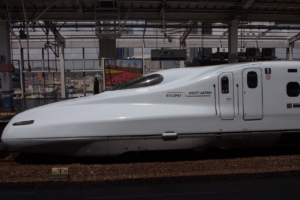Are you looking for a unique way to explore Japan’s scenic coastlines and remote islands? Look no further than Japan’s extensive ferry system. With over 5,000 islands scattered throughout the country, ferry travel is not only a practical mode of transportation but also a thrilling adventure.
In this guide, you’ll learn all about Japan’s ferry services, from island hopping to scenic routes. Discover the onboard amenities and services, safety regulations, and cultural insights that will make your ferry journey unforgettable.
Plus, we’ll share local tips to help you navigate the booking process and minimize your environmental impact. Get ready to set sail on a one-of-a-kind journey through Japan’s breathtaking waterways.
Key Takeaways
- Japan’s ferry system is an extensive and efficient network of passenger and car ferries connecting the country’s islands.
- Ferries are equipped with comfortable amenities such as seating, restaurants, hot springs, cinemas, and karaoke rooms.
- Island hopping in Japan is a unique and unforgettable adventure, with must-visit islands including Miyajima, Naoshima, Yakushima, and Okinawa.
- Traveling by ferry is a more sustainable and environmentally-friendly option compared to airplanes or cars, with ferry companies committed to reducing their carbon footprint.
Overview of Japan’s Ferry System
Japan’s ferry system is an efficient and affordable mode of transportation that offers stunning views of the country’s coastline and islands. It is an extensive network of passenger and car ferries that connects the various islands of Japan, providing a unique way to explore the country’s beautiful landscapes and cultural heritage.
The ferries are operated by several companies, including the Japan Railway (JR) Ferry, Hankyu Ferry, and A-Line Ferry. They are equipped with comfortable seating areas, restaurants, and souvenir shops. Some of the larger ferries even have hot springs, cinemas, and karaoke rooms.
With regular departures and arrivals, it’s easy to plan a trip and hop from one island to another.
Island Hopping in Japan
Explore stunning clusters of islands in Japan by hopping on a ferry and experiencing the breathtaking scenery up close. Japan’s ferry system offers an affordable and convenient way to explore the archipelago’s hidden gems.
Here are some of the must-visit islands you can include in your itinerary:
- Miyajima: A UNESCO World Heritage Site known for its iconic Torii gate, friendly deer, and stunning views of Mount Misen.
- Naoshima: An art lover’s paradise with contemporary art installations, museums, and galleries dotted around the island.
- Yakushima: A mystical island covered in ancient cedar forests, waterfalls, and hot springs. It inspired the setting of the Studio Ghibli film, Princess Mononoke.
- Okinawa: A tropical paradise with turquoise waters, white sand beaches, and a unique culture influenced by its Ryukyu Kingdom past.
With over 6,800 islands to choose from, island hopping in Japan is an adventure you won’t soon forget. Don’t forget to check ferry schedules and book in advance to ensure a smooth and hassle-free trip.
So pack your bags, grab your camera, and explore the beauty of Japan’s islands!
Scenic Ferry Routes
Taking a ferry to experience the stunning scenery is a must-do when visiting the islands of Japan. Japan’s ferry services offer several scenic routes that will take you through some of the country’s breathtaking landscapes.
For instance, the Kagoshima to Yakushima route is a popular choice for its picturesque views of the volcanic landscape and the surrounding sea.
Another scenic ferry route is the Miyajima to Miyajima-guchi route, which takes you across the Seto Inland Sea. Along the way, you’ll see the iconic Itsukushima Shrine, which appears to float on the water during high tide. You’ll also catch glimpses of the verdant mountains and islands dotting the sea.
Whether you’re a nature enthusiast or a photography buff, these scenic ferry routes are sure to offer you a memorable experience of Japan’s natural beauty.
Booking Your Ferry Tickets
When you’re planning your trip, don’t forget to book your ferry tickets in advance to ensure a smooth and hassle-free journey. Here are some tips to help you:
-
Research your options: Before booking, research the different ferry companies and routes available. Look for the most convenient and cost-effective options that fit your schedule and budget.
-
Check for discounts: Some ferry companies offer discounts for early or group bookings. Check their websites or contact customer service for promotions.
-
Book online: Most ferry companies have easy-to-use online booking systems. Choose your preferred date, time, seating arrangement, and pay online using your credit card. Print your ticket or have it ready on your phone before boarding.
Booking in advance can save you time, money, and avoid disruptions in your travel plans. Follow these tips for a worry-free ferry journey and enjoy the beautiful scenery along the way.
Onboard Amenities and Services
As you step onboard, you’ll be greeted with a plethora of amenities and services to enhance your ferry journey. Most ferries in Japan offer comfortable seating options, ranging from basic economy seats to luxurious private cabins. Some ferries even have hot spring baths, where you can relax and unwind while enjoying the scenic views of the sea.
If you’re feeling hungry, most ferries also have restaurants and cafes onboard, serving a variety of Japanese cuisine and snacks. You can also find vending machines for drinks and snacks, as well as convenience stores selling souvenirs and travel essentials.
Additionally, many ferries have entertainment options such as karaoke rooms, game areas, and movie theaters, making your journey more enjoyable and memorable.
Safety and Regulations
It’s important for you to know that safety regulations are strictly enforced on ferries to ensure your well-being throughout the journey.
Before boarding the ferry, you’ll be given a safety briefing that covers important information such as emergency exits, life jackets, and evacuation procedures. It’s important that you pay attention to this briefing and follow the instructions of the crew in case of an emergency.
In addition to the safety briefing, there are also regulations in place to ensure that passengers stay safe during the journey. For example, there are rules about smoking, drinking, and carrying dangerous goods onboard. These regulations are in place to prevent accidents and ensure that everyone onboard the ferry can enjoy a safe and comfortable journey.
So, while you may be tempted to bring your own alcohol or cigarettes onboard, it’s important to remember that these items are prohibited for your own safety and the safety of others.
Cultural Insights and Local Tips
Now that you’re ready to explore Japan’s ferry services, let’s talk about some cultural insights and local tips to make your trip even more enjoyable.
First, it’s important to know about Japanese etiquette and customs, such as bowing and taking off your shoes when entering a home.
Additionally, while many Japanese people speak English, it’s always helpful to learn a few key phrases for communication.
Lastly, don’t forget to take advantage of local recommendations for the best food, sights, and experiences along your ferry route.
Etiquette and Customs
Don’t forget to show respect for Japanese customs and etiquette while using their ferry services. Here are some tips to keep in mind:
-
Remove your shoes before boarding the ferry if you see a shoe rack or if a crew member asks you to do so.
-
Bow to the captain and crew members as a sign of respect.
-
Refrain from talking loudly or making a commotion while on board to avoid disturbing other passengers.
-
Dispose of your trash properly and keep the ferry clean.
-
Avoid eating or drinking on the ferry unless it’s provided by the ferry company. If you do bring your own food, make sure to clean up after yourself.
Language and Communication
When you’re traveling on a ferry in Japan, it’s helpful to learn a few phrases in Japanese to communicate with the crew and other passengers. While many Japanese people speak English, especially those working in the tourism industry, it’s always polite to make an effort to speak their language. Here are some phrases you may find useful:
| Japanese | English |
|---|---|
| ã™ã¿ã¾ã›ã‚“ (sumimasen) | Excuse me/I’m sorry |
| ã‚ã‚ŠãŒã¨ã† (arigatou) | Thank you |
| ãŠé¡˜ã„ã—ã¾ã™ (onegaishimasu) | Please |
| ã¯ã„ (hai) | Yes |
| ã„ã„㈠(iie) | No |
It’s also important to note that Japanese is a very polite language, and there are different levels of formality depending on who you’re speaking to. When addressing the crew or other passengers, it’s best to use polite language (keigo) to show respect. For example, instead of saying "arigatou,"you could say "arigatou gozaimasu"to show a higher level of politeness. By making the effort to learn a few phrases and using polite language, you’ll be sure to have a more enjoyable and respectful experience on Japan’s ferry services.
Local Recommendations
To fully immerse yourself in the local culture, you’ll want to ask the crew or fellow passengers on the ferry for their favorite hidden gems and recommendations on places to visit. They may suggest off-the-beaten-path destinations that are not typically visited by tourists.
Some popular local recommendations include:
- Visiting the Hachijojima Island, which is known for its hot springs and volcanic mountain hikes.
- Exploring the Oki Islands, which are a UNESCO Global Geopark with stunning landscapes and unique flora and fauna.
- Trying the local cuisine, such as Hiroshima-style okonomiyaki, a savory pancake filled with vegetables and meat.
- Taking part in traditional festivals and events, such as the Aomori Nebuta Festival, where massive illuminated floats are paraded through the streets.
By asking for local recommendations, you’ll not only discover hidden gems but also gain a deeper understanding of Japan’s rich culture and traditions. So don’t be afraid to strike up a conversation with your fellow passengers and learn about their favorite spots.
Environmental Impact and Sustainability
You can make a positive impact on the environment by choosing to travel by ferry and supporting sustainable transportation options. Ferries emit significantly less carbon dioxide than airplanes or cars, making them a more environmentally-friendly mode of transportation.
Additionally, many ferry companies are committed to reducing their carbon footprint by using cleaner fuels or implementing energy-efficient technologies. However, it’s important to be mindful of the impact that ferry travel can still have on the environment.
For example, ferry engines can still emit pollutants that can harm wildlife and contribute to climate change. To minimize your impact, consider taking shorter trips, choosing ferries with newer and more efficient engines, and reducing your overall carbon footprint by consuming less energy and supporting sustainable practices in your daily life.
By making conscious choices and supporting sustainable transportation options, you can help preserve the natural beauty of Japan’s islands for future generations to enjoy.
Frequently Asked Questions
Are there any restrictions on bringing pets onboard Japan’s ferry services?
Yes, there are usually restrictions on bringing pets onboard Japan’s ferry services. Most ferry companies require that pets be kept in pet carriers or cages during the entire journey. Some companies may also have restrictions on the number of pets allowed per passenger or the types of pets allowed onboard.
Additionally, it’s important to note that certain routes and vessels may not allow pets at all. It’s always best to check with the specific ferry company beforehand to ensure that you’re following their pet policies and guidelines.
Can I bring my own food and drinks onboard the ferry?
Yes, you can bring your own food and drinks onboard the ferry. Most ferry services in Japan allow passengers to bring their own food and drinks, except for some high-end cruise ships that have strict policies.
Bringing your own food and drinks is a great way to save money and enjoy your own snacks and beverages while enjoying the scenic views. However, it’s always a good idea to check the ferry company’s website or contact them directly to confirm their policy on bringing food and drinks onboard.
Also, keep in mind that some ferry terminals have convenience stores or vending machines where you can purchase food and drinks before boarding.
Is it possible to rent a car or scooter from the ferry port?
Yes, it’s possible to rent a car or scooter from the ferry port. Many ferry ports in Japan offer rental services for cars and scooters, making it convenient for travelers to explore their destination.
Some ferry companies even offer package deals that include both ferry tickets and rental vehicles. However, rental availability may vary depending on the port and the time of year.
It’s always a good idea to check with the ferry company or rental service in advance to ensure availability and make reservations if necessary.
Do the ferries have Wi-Fi and charging ports for electronic devices?
Yes, many ferries in Japan offer Wi-Fi and charging ports for electronic devices. This is especially common on longer routes, where passengers may need to stay connected or entertained during the journey.
However, it’s always a good idea to check with the ferry company beforehand to confirm that these amenities are available on your particular route. Additionally, be aware that the quality and availability of Wi-Fi and charging ports may vary depending on the ferry and the location, so it’s a good idea to bring backup batteries or portable chargers just in case.
Are there any special events or festivals that take place on the ferry routes?
If you’re wondering about special events or festivals that take place on Japan’s ferry routes, you’re in luck! Many of the ferry companies offer themed cruises throughout the year. For example, cherry blossom viewing or autumn foliage tours. Some routes even host traditional Japanese performances or cultural events onboard. So, keep an eye on the schedules and websites of your preferred ferry companies to see what special events may be happening during your travels.
Conclusion
Now that you’ve learned about Japan’s ferry system, it’s time to plan your island hopping adventure or scenic route journey. Remember to book your tickets in advance, and take advantage of the onboard amenities and services.
Safety and regulations are a top priority, so make sure to follow all guidelines and instructions from the crew.
When traveling by ferry in Japan, you’ll also have the opportunity to gain cultural insights and local tips from fellow passengers or crew members. And don’t forget to consider the environmental impact of your travels and strive to make sustainable choices.
So pack your bags and get ready for a unique and unforgettable experience exploring Japan’s beautiful islands by ferry.




































































































































